Digital Microscopes
Observation and Measurement of Sintered Parts Using Digital Microscopes
Sintered parts are manufactured by forming metallic or ceramic powders in metal molds and then baking and hardening the molded parts at temperatures lower than their melting points. The advantages of sintering are that only a small amount of energy is required with minimum material losses and no time and effort are required for secondary processing because metals do not need to be melted.

This section provides an overview of sintering and introduces observation and measurement examples of sintered parts using digital microscopes.
Advantages and Disadvantages of Sintering
Sintering is used to manufacture various parts because materials do not need to be melted.
Advantages of sintering
- Almost any material can be used as long as it can be powdered.
- Secondary processing is not required in many cases.
- Material losses are small.
- Complex shapes can be molded.
- Materials can be freely mixed.
- Sintered parts are porous and thus light.
- Even materials with high melting points can be processed.
Disadvantages of sintering
- Powders are processed, which increases the material costs.
- Parts shrink when sintered.
- Mechanical properties, such as strength, are inferior to those produced by casting or pressing.
Get detailed information on our products by downloading our catalog.
View Catalog

Principle of Sintering
Solid powder surfaces are unstable because atoms, molecules, and ions are not bonded. Joints called necks are formed when solid powders are heated. As atoms, molecules, and ions move (diffuse) from powder particle surfaces to necks, necks become larger and the surface areas decrease. As necks continue to grow through the initial, intermediate, and final stages, density increases and the sinter is completed.
Pores that are connected to external air are called open pores and those isolated in an object are called closed pores.
Powder compact

Initial stage
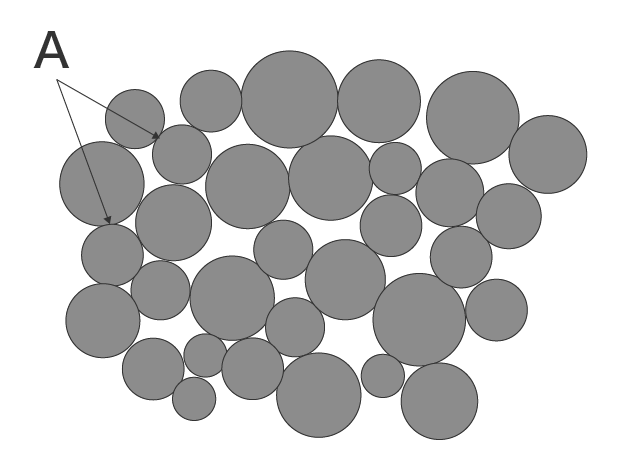
A: Neck
Intermediate stage

B: Open pores
Final stage
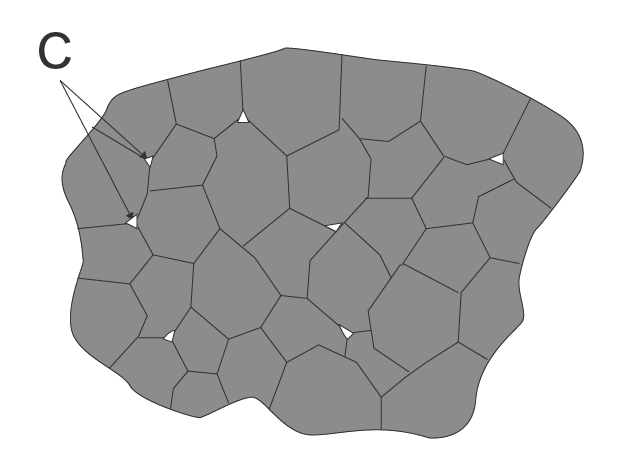
C: Closed pores
We’re here to provide you with more details.
Reach out today!

Sintering Flow
Sintering furnaces are filled with gases to prevent sinters from becoming oxidized.
Sinters may be cut or polished to increase accuracy or heat-treated to increase hardness.
-
1Determine the mixing ratio of material powders and mix them with a mixier until the mixture becomes uniform.
-
2Put the powder mixture into a metal mold and form it with a press.
-
3Heat the molded part in a sintering furnace for several hours.
Material powders do not melt because the molded part is baked to harden at temperature lower than their melting points. Material powders are firmly bonded to each other when heated for a long time and become a sinter.
Raw materials are powdered.

Material powders are mixed.

A: Mixer
The mixture is molded.

B: Press
The molded part is sintered.

C: Sintering furnace
Finished product
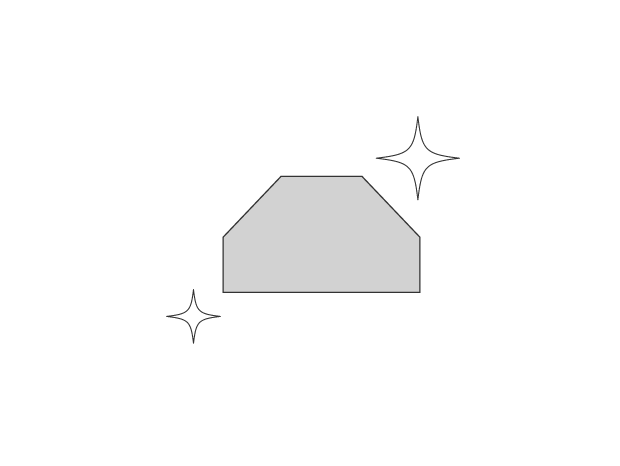
We’re here to provide you with more details.
Reach out today!

Observation and Measurement Examples of Sintered Parts Using Digital Microscopes
These are the latest examples of observation and measurement of sintered parts using KEYENCE’s VHX Series 4K Digital Microscope.
Observation of particle boundaries on a sinter (ferrite core)
The adjustable illumination attachment can be used to clearly check particle boundary sizes and density.

VH-Z100, 700×, mixed illumination + adjustable illumination attachment
Low particle boundary density (low strength)
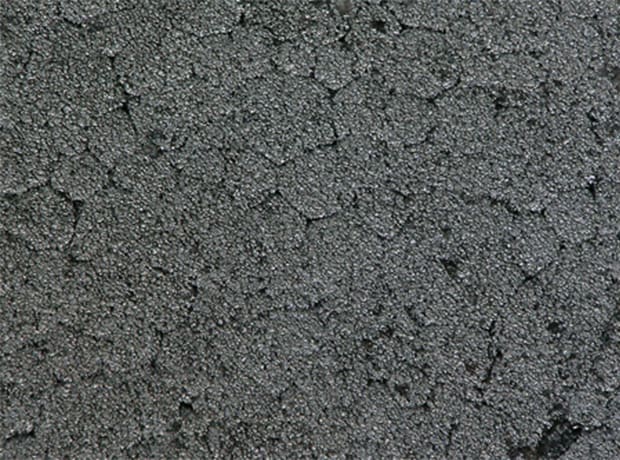
VH-Z100, 700×, mixed illumination + adjustable illumination attachment
High particle boundary density (high strength)
Observation of cracks on a ceramic sinter
With the HDR function, it is possible to check how far cracks extend.
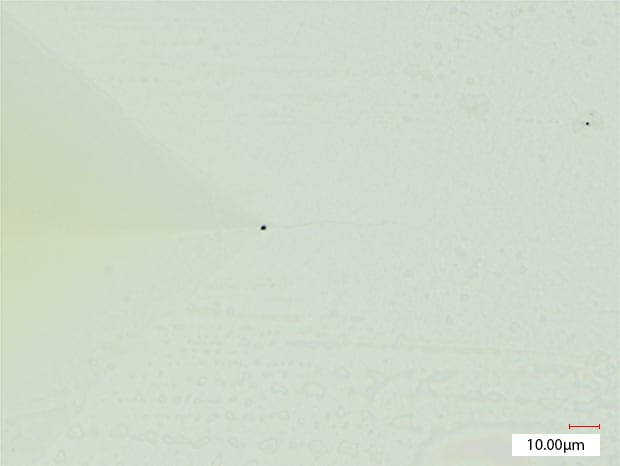
1000×, coaxial illumination, without HDR

1000×, coaxial illumination + HDR
Observation of a sinter surface
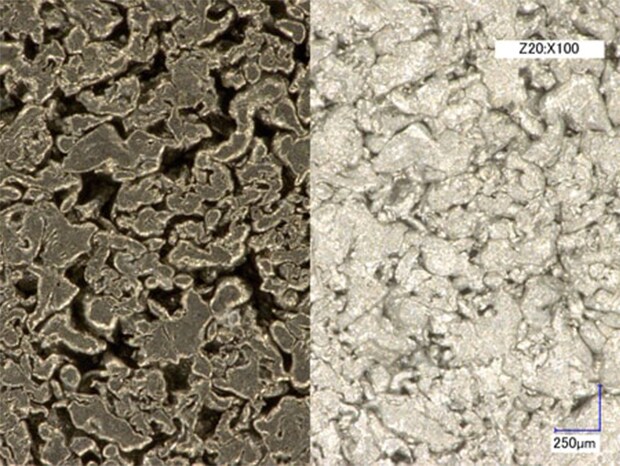
VH-Z20, 100×, ring illumination + adjustable illumination attachment
Left: With the attachment/Right: Without the attachment
Using the adjustable illumination attachment allows for pores to be observed clearly.
Automatic area measurement of a ceramic sinter
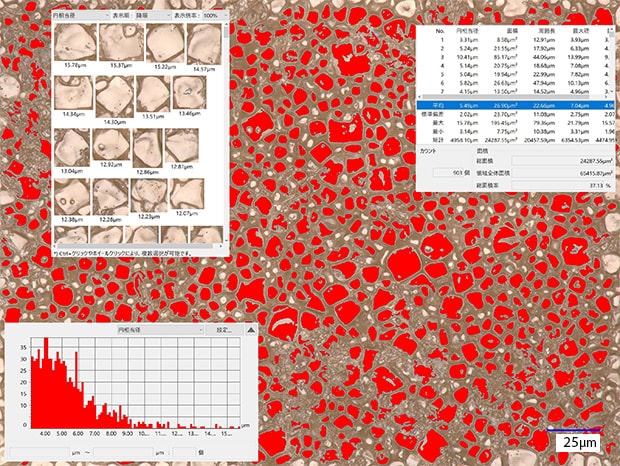
VHX-E500, 1000×, coaxial illumination
The grains used to be visually counted by size using a scanning electron microscope (SEM).
This process can now be done automatically using the automatic area measurement function.
Automatic area measurement of pores in a ceramic sinter
Automatic area measurement can be performed with the same settings, which improves efficiency.

ZS-200, 1000×, coaxial illumination
Before measurement

ZS-200, 1000×, coaxial illumination
Automatic area measurement image
Grain size analysis for a metal sinter
The grain sizes used to be compared with limit samples, which caused variations in evaluation.
The automatic area measurement function allows for accurate grain size analysis, significantly reducing the amount of analysis work.

ZS-200, 1500×, coaxial illumination
Before measurement

ZS-200, 1500×, coaxial illumination
Automatic area measurement (grain size analysis) image
Get detailed information on our products by downloading our catalog.
View Catalog




